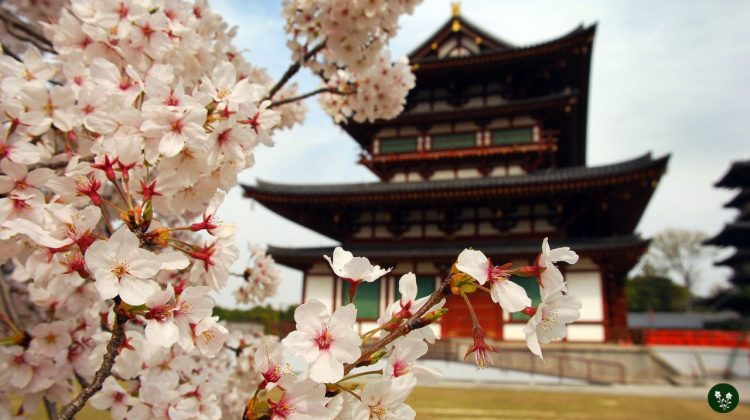
The Sakura flower, commonly known as the cherry blossom, holds a significant meaning in Japanese culture.
Recognized for their delicate and short-lived blooming period, these flowers symbolize ephemerality, reminding people to cherish the beauty and fleeting nature of existence.
Sakura’s connection to transient beauty has deep roots in Buddhist traditions and Japanese cultural practices.
Cherry blossoms are also a symbol of renewal as they arrive each year, carpeting the landscape in clouds of pink and white.
Sakura flowering trees serve as a metaphor for the transient nature of life, an intrinsically Japanese concept called “mono no aware”.
With Sakura season celebrated nationwide, these blossoms’ elegance and delicate nature continue to inspire art, poetry, and a deeper appreciation of the impermanence of life, reminding us to treasure each moment we have.
In this article, we'll cover
1. The Sakura Flower
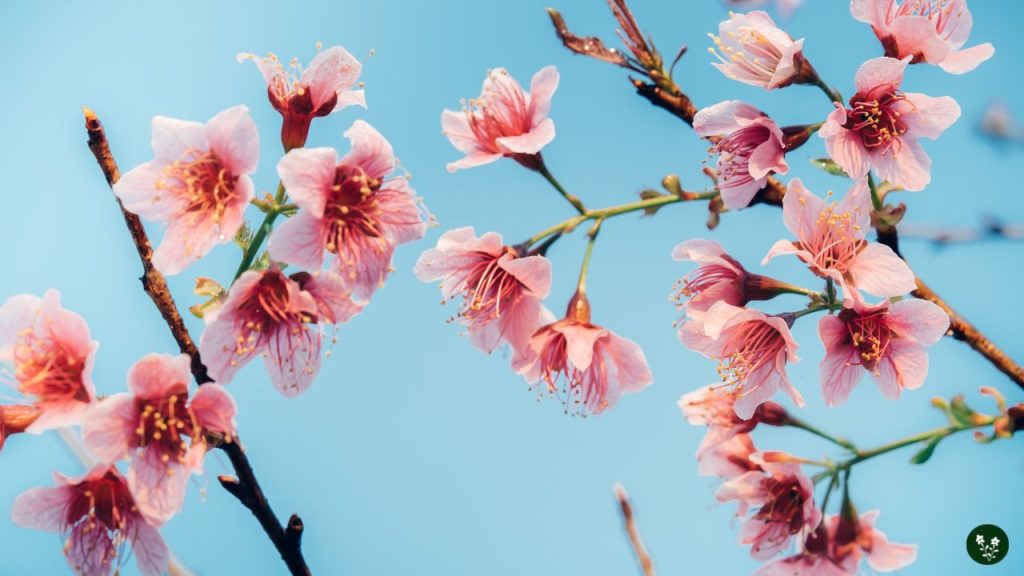
The Sakura flower, also known as the cherry blossom, is a beloved symbol of Japan and holds deep cultural significance in many aspects of Japanese life.
It is admired not only for its beauty but also for the various meanings it represents.
Botanical Characteristics
The cherry blossoms are the flowers of the cherry tree, which belongs to the genus Prunus. They can be found in shades of pink, white, purple, and yellow, with pink being the most common color.
The gentle and delicate appearance of the blossoms, along with their short blooming season, serve as symbols of life’s transience and renewal.
Cherry blossoms bloom briefly, usually lasting only a week or two before the petals fall to the ground or are carried away by the wind.
This fleeting beauty has come to be known as “sakura snow” and adds to the symbolic meaning of the blossoms.
In addition to its visual appeal, the Sakura flower carries several meanings in Japanese culture.
Some interpretations of the cherry blossom in the Japanese “hanakotoba” language include qualities like kindness and gentleness, leading to the association of the flower with the idea of a “beautiful soul” or “beautiful woman.”
In Buddhism, the transient nature of the blossoms serves as a poignant reminder of the impermanence of life.
Due to its various cultural and symbolic associations, the Sakura flower has become an important part of Japan’s national identity, inspiring people to take part in annual “hanami” or cherry blossom viewing events to admire and appreciate the transient beauty of this remarkable flower.
2. Cultural Significance
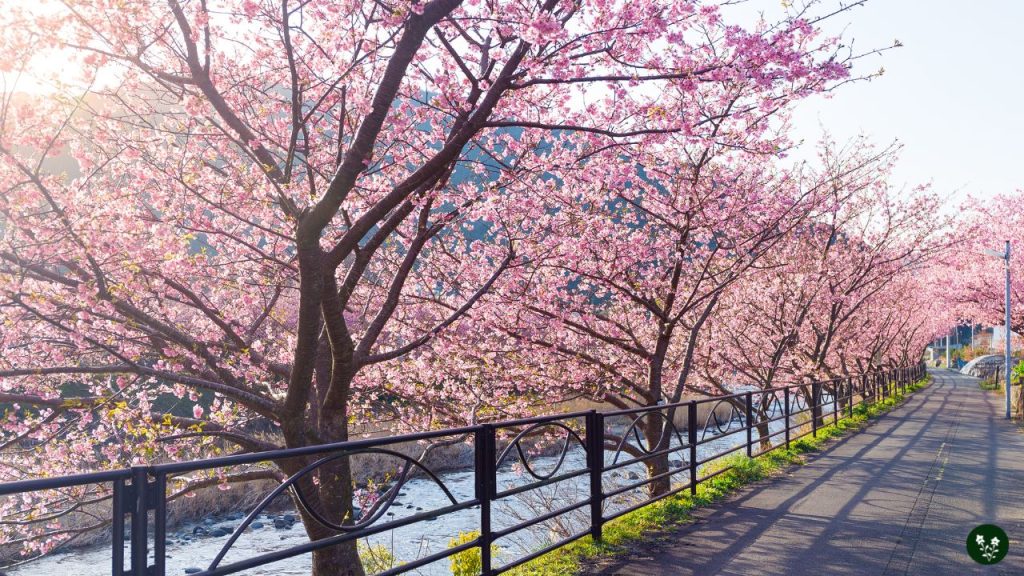
Japanese Culture
In Japanese culture, cherry blossoms, or sakura, carry significant symbolism. Tied to the Buddhist themes of mortality, mindfulness, and living in the present, they serve as a timeless metaphor for human existence.
Sakura blooms for a short period, making them a symbol of the transience of life. They also represent rebirth, renewal, and new beginnings.
Cherry blossoms play a central role in the Japanese worship of nature and embody beauty and violence, symbolizing birth and death. Additionally, sakura is widely celebrated in Japanese literature, poetry, and art.
Chinese Culture
In Chinese culture, cherry blossoms have similar significance as they do in Japan. They symbolize rebirth, renewal, and new beginnings.
Due to their short-lived blooming period, cherry blossoms also represent the fleeting nature of life, reminding people to cherish the present moment.
The blossoms are often associated with feminine beauty, love, and strength. In ancient China, they were seen as a symbol of power and used to convey messages of courage and dominance.
3. Symbolic Meanings
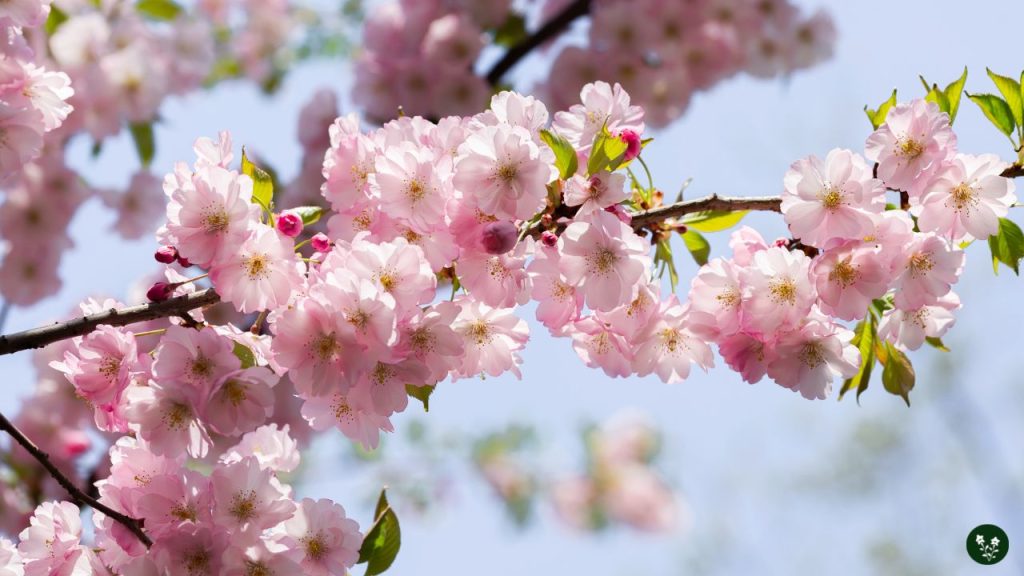
Impermanence
The Sakura flower is known for its fleeting beauty. Its delicate blooms last only for a week or two before the “sakura snow” falls to the ground or is carried off by the breeze.
This ephemerality has led the flowers to represent life’s impermanence, a theme strongly tied to Buddhist roots in Japan.
New Beginnings
Cherry blossoms also symbolize renewal and optimism. The pops of pink mark the end of winter and the beginning of spring, representing new beginnings and fresh starts.
Love and Affection
The most common color of the Sakura flower is pink, which is often associated with love, affection, romance, charm, and tenderness.
The Sakura’s gentle blossoms and vibrant colors create an atmosphere that evokes these warm and tender emotions.
4. Sakura in Festivals and Events

Hanami
Hanami is an ancient Japanese tradition of enjoying the blooming cherry blossoms, or sakura, in parks and the countryside.
This cultural event symbolizes the appreciation of the fleeting beauty of the blossoms, which usually last for around two weeks before falling.
Hanami parties are held under the blooming sakura trees, where people gather with friends and family to enjoy picnic-style meals, sing, and celebrate the arrival of spring.
The popular somei-yoshino cherry trees are the center of attraction during Hanami.
Cherry Blossom Festivals Worldwide
In addition to Japan, cherry blossom festivals are held worldwide to celebrate the captivating beauty of sakura.
These events often showcase Japanese tradition and culture, with various activities and performances taking place in appreciation of the cherry blossoms.
In Japan, the arrival of the cherry blossom is commemorated in numerous festivals across the country, with popular destinations like Okinawa, Kyoto, Tokyo, and Hirosaki.
These festivals serve as both a celebration of spring and a reminder of the transient nature of life.
Outside Japan, cherry blossom festivals are held in several countries, including the United States, South Korea, and Germany.
One notable example is the National Cherry Blossom Festival in Washington, D.C., which celebrates the friendship between the United States and Japan.
The festival features various cultural events, performances, and art exhibitions that showcase Japanese heritage.
5. Sakura-Inspired Art and Literature
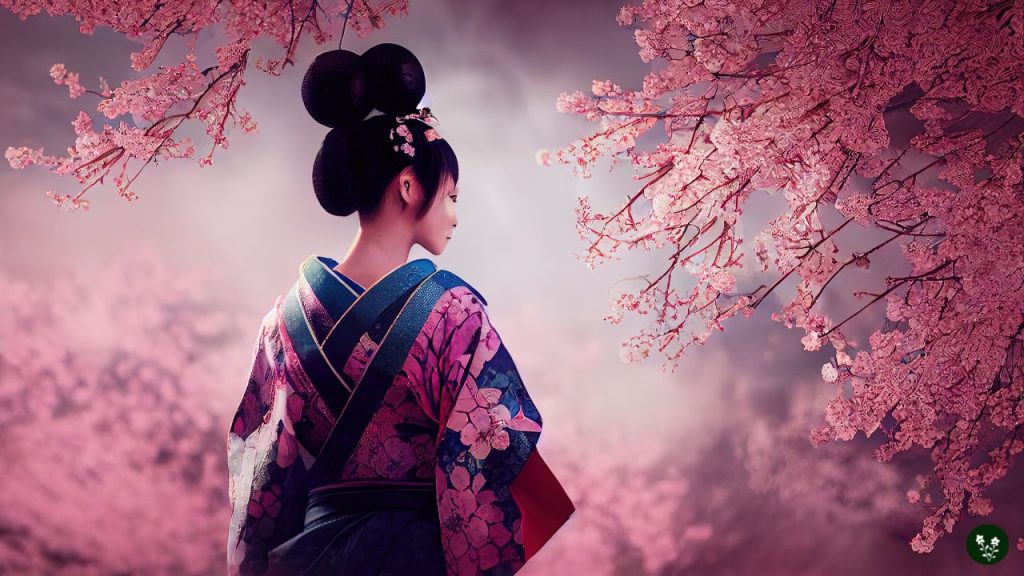
The Sakura flower has profoundly influenced Japanese art and literature, representing the transient beauty of life and renewal.
This section will focus on three key areas of Sakura’s impact: traditional Japanese art, poetry, and literature.
Traditional Japanese Art
Cherry blossoms have been popular in Japanese art, particularly during the Heian period (794-1185).
This era saw an increased interest in depicting the beautiful and fleeting Sakura in various art forms, including paintings, woodblock prints, and even textiles.
Artists would capture scenes of cherry blossoms in full bloom or use them as decorative elements in their works, showcasing their significance in Japanese culture.
Poetry
In Japanese poetry, Sakura has been celebrated and revered for centuries. Haiku, a traditional form of Japanese poetry, often features cherry blossoms as a symbol of the fleeting nature of life.
These short, three-line poems strive to convey a strong emotion or observation within their limited syllable count, and Sakura’s transient beauty perfectly encapsulates this poetic style.
Some famous Japanese poets, like Matsuo Basho and Kobayashi Issa, have written memorable Haiku about cherry blossoms.
Literature
Sakura’s symbolism can also be found in various works of Japanese literature. One notable example is The Tale of Genji, a classic Japanese novel by Murasaki Shikibu known for vivid depictions of courtly life and relationships.
In the story, the Sakura flower serves as an essential motif, representing life’s beauty and impermanence.
Many other forms of Japanese literature, such as diaries and essays, also reference cherry blossoms as a metaphor for the transience of human existence.
Conclusion
In summary, the Sakura flower, or cherry blossom, holds great significance in various cultures, particularly in Japan, where it symbolizes the beauty of life, impermanence, and renewal.
The breathtaking sight of cherry blossoms in full bloom during spring serves as a cherished reminder to embrace the fleeting nature of life and appreciate its beauty at the moment, as mentioned in the Smithsonian Institution’s blog.
The Sakura flower inspires numerous artistic and poetic expressions, portraying hope, peace, and love.
This treasured flower represents not only the fragile and short-lived nature of existence but also the cyclical pattern of life that reminds us of the constant process of renewal and growth, as explained in Not Without My Passport.
Overall, the Sakura flower’s meaning and symbolism provide a profound message of embracing the present moment and appreciating the transient beauty of life, which resonates with people from all walks of life and transcends cultural boundaries.
Thus, the Sakura flower truly captures the essence and spirit of Japanese culture, art, and philosophy.
Discover the hidden meanings behind your favorite blooms:
- Calla Lily Meaning and Symbolism: A Spiritual Journey
- Lavender Flower Meaning for Love and Spiritual Growth
- Bells of Ireland: The Meaning, Symbolism, and Growing Guide
- Myrtle Flower Meaning: Symbolism and Characteristics
- Dahlia Flower Meaning: Hidden Messages in Petals
- Lotus Flower Meaning: A Symbol of Spiritual Enlightenment
- The Symbolic Daisy Flower: Exploring the Meaning of Love
Leave a Reply